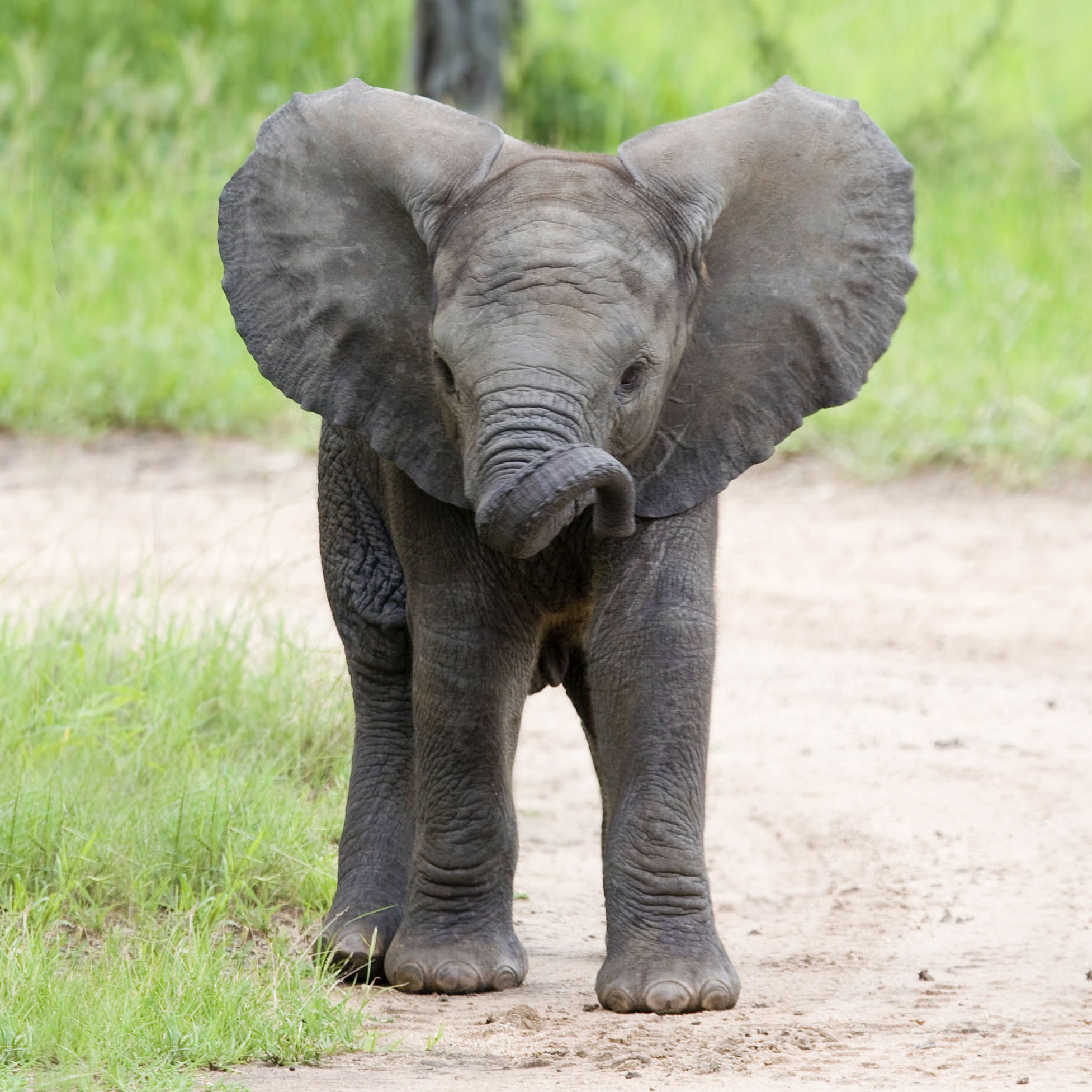Elephant
Elephants are the largest land mammals on Earth, known for their distinctive long trunks, large ears, and complex social behaviors. They belong to the family Elephantidae and are divided into two distinct species: the African elephant and the Asian elephant. Here's a detailed look at these majestic creatures:
Classification
Scientific Names:
African Elephant: Loxodonta africana
Asian Elephant: Elephas maximus
Family: Elephantidae
Order: Proboscidea
Physical Description
Size: African elephants are larger, standing up to 4 meters (13 feet) at the shoulder and weighing between 4,000 and 7,500 kilograms (8,818 to 16,534 pounds). Asian elephants are smaller, typically standing up to 2.7 meters (9 feet) and weighing between 3,000 and 5,000 kilograms (6,613 to 11,023 pounds).
Appearance: Elephants are noted for their thick, gray skin, large ears (especially large in African elephants), and long trunks which are used for breathing, smelling, touching, grasping, and producing sound. Both male and female African elephants have tusks, while only some male Asian elephants have tusks.
Distinguishing Features: African elephants have larger ears shaped like the continent of Africa, while Asian elephants have smaller, rounded ears. The back of an African elephant is concave, whereas an Asian elephant has a convex or straight back.
Habitat and Distribution
Habitat: Elephants are found in a range of habitats including savannahs, forests, deserts, and marshes. African elephants are primarily found in sub-Saharan Africa, in habitats ranging from dense forests to open plains. Asian elephants are found in various regions across South and Southeast Asia, including India, Sri Lanka, Thailand, and Borneo.
Distribution: The distribution of elephants has diminished significantly due to habitat loss and poaching. They are now mostly limited to protected areas and regions with controlled poaching.
Behavior
Diet: Elephants are herbivores, consuming grasses, leaves, bamboo, bark, and roots. They are known to eat up to 150 kg (330 lbs) of food per day.
Social Structure: Elephants are highly social and intelligent. They live in matriarchal family groups in the wild, which are led by the oldest female, known as the matriarch. Social interactions include bonding behaviors such as touching, smelling, and trunk entwining.
Reproduction: Elephants have a long gestation period of about 22 months, the longest of any land animal. Typically, a single calf is born, and it can stand and follow its mother within an hour of birth.
Conservation Status
Threats: Both species of elephants face severe threats from habitat loss and poaching, primarily for their ivory tusks. Human-elephant conflict is also a significant issue as human populations expand into elephant territories.
Conservation: Elephants are protected under various international treaties and conservation programs. Anti-poaching efforts, habitat restoration, and conflict mitigation strategies are crucial for their survival. The African elephant is listed as vulnerable, and the Asian elephant as endangered on the IUCN Red List.
Interesting Facts
Elephants have a highly developed brain, comparable in structure and complexity to those of humans, dolphins, and great apes.
They are known for exhibiting behaviors associated with grief, learning, art, play, and music.
Elephants play a critical ecological role as keystone species, shaping their habitat by facilitating forest regeneration and creating water access for other animals. Their preservation is essential for maintaining the ecological integrity of their habitats.

Комментарии
Отправить комментарий